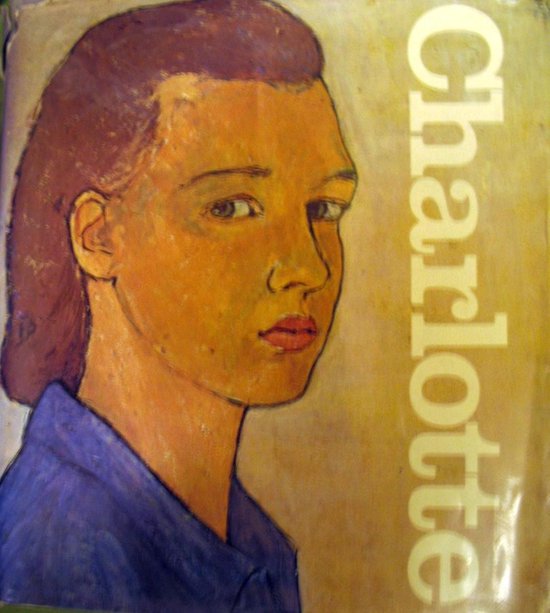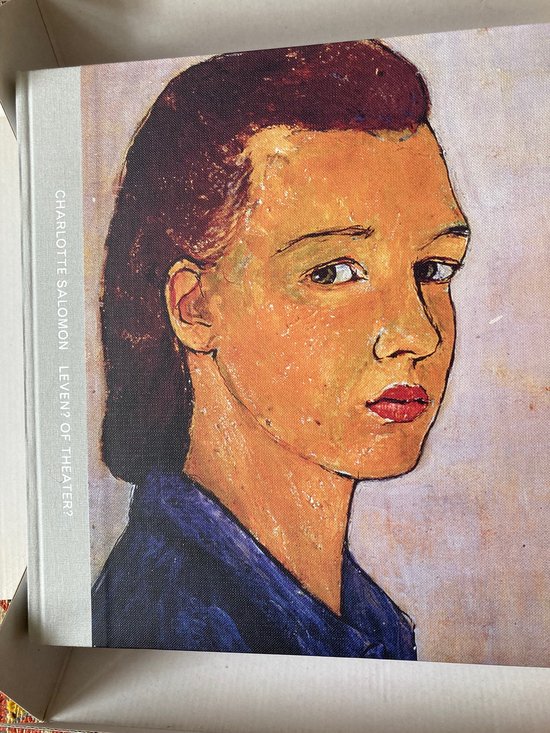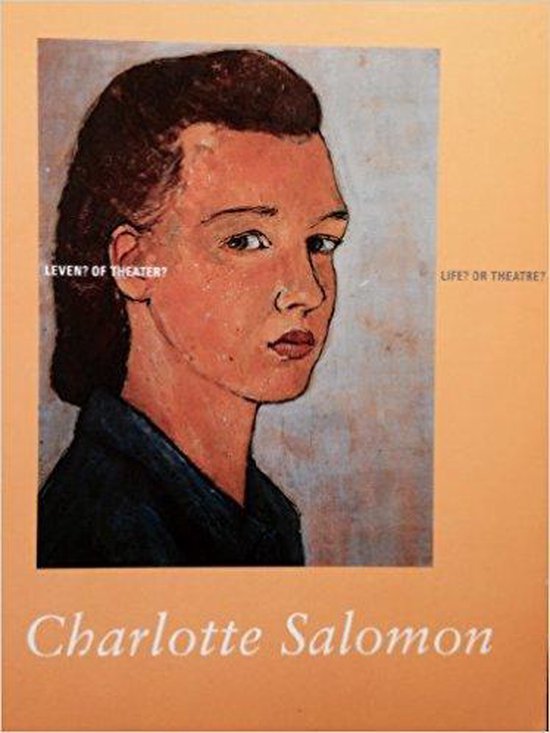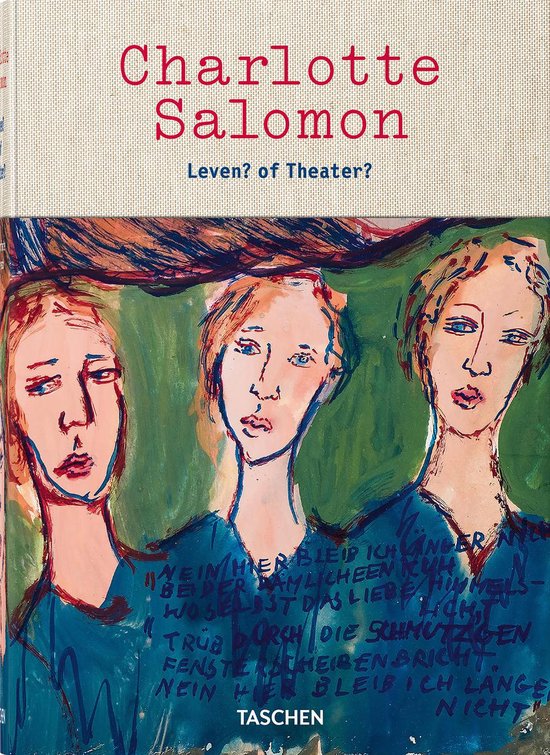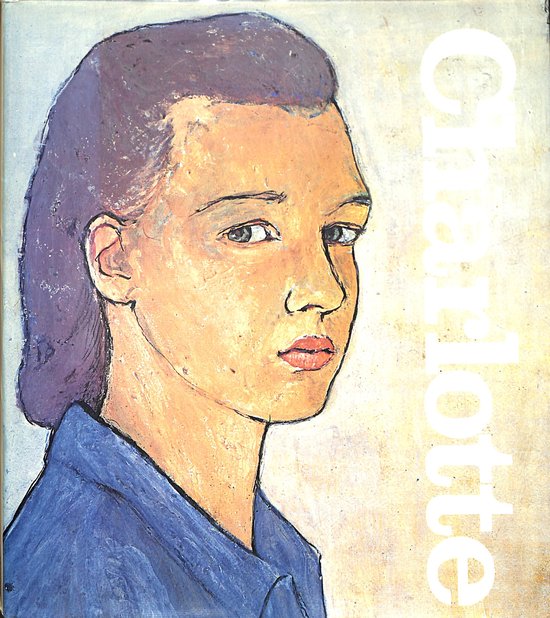
Charlotte Salomon life or theater?
Charlotte Salomon was born in Berlin in 1917, the daughter of a cultured Jewish surgeon.
When she was nine years old her mother committed suicide, and when she was twelve her father took Paulinka, a famous opera singer and the daughter of a cantor, as his second wife. Charlotte was a morose child, abnormally shy and slow of speech. She worshiped her stepmother, but deliberately annoyed her at the same time. As a twenty-year-old student at the Berlin art academy, she met—through Paulinka—and fell in love with an extraordinary man nearly twice her age, whom in her book she calls Daberlohn. Daberlohn was a voice teacher with extreme theories of art and personality that made others either admire him as a prophet or pity him as a self-deceived charlatan.
Not long after the start of her secret affair with Daberlohn, there was the terror of Kristallnacht, and Charlotte was sent to the south of France to stay with her maternal grandparents. There her grandmother committed suicide, and her grandfather revealed to her the fact of her mother’s suicide and that of several other members of the family whom Charlotte had believed to have died natural deaths.
Charlotte felt that she had no more life left to live. The Nazi threat was compounded by her family doom. As she put it, she now had the choice of taking her own life or doing something undreamt-of. She undertook the latter, and succeeded. She called on all her reserves—her near-absolute visual recall of her
own life, her ironic grasp of the character of her family and friends, her artistic talent and training, and, most important of all, her inspiration by Daberlohn. He had taught her that only by plumbing the dark side of life could she understand her own existence. She accepted his challenge. In 769 merciless, humorous, and unforgettable paintings, she elevated her life into what Daberlohn called theater, a form of existence in art that has more meaning than mere life.
She numbered the paintings and divided them into a tight structure of Acts, Scenes, and Chapters. When she was finished after two years of obsessive work, she entrusted the book with the words ‘C’est toute ma vie’ to the doctor of the French village where she lived. Her work survived the war. Its extraordinary artistic value was recognized by Willem Sandberg, who saw to it that the paintings came into the care of the Jewish Historical Museum in Amsterdam. Charlotte did not survive. She was taken by the Nazis to Auschwitz, where she died in 1943.
Life or Theater? is a unique achievement of art and literature. No one who enters into Charlotte Salomon’s world will ever forget it. This publication of her work, with all 769 paintings in full-page color reproductions, is one of the most stirring literary discoveries of our time.
Judith Herzberg is a Dutch poet and writer who has been involved with Charlotte Salomon’s work for over twenty years. She is the co-author of the screenplay for the film Charlotte, which was inspired by Life or Theater? and was directed by Frans Weisz.
The painting on the jacket is a self-portrait of Charlotte Salomon at the age of twenty-three. (Amsterdam, private collection)
When she was nine years old her mother committed suicide, and when she was twelve her father took Paulinka, a famous opera singer and the daughter of a cantor, as his second wife. Charlotte was a morose child, abnormally shy and slow of speech. She worshiped her stepmother, but deliberately annoyed her at the same time. As a twenty-year-old student at the Berlin art academy, she met—through Paulinka—and fell in love with an extraordinary man nearly twice her age, whom in her book she calls Daberlohn. Daberlohn was a voice teacher with extreme theories of art and personality that made others either admire him as a prophet or pity him as a self-deceived charlatan.
Not long after the start of her secret affair with Daberlohn, there was the terror of Kristallnacht, and Charlotte was sent to the south of France to stay with her maternal grandparents. There her grandmother committed suicide, and her grandfather revealed to her the fact of her mother’s suicide and that of several other members of the family whom Charlotte had believed to have died natural deaths.
Charlotte felt that she had no more life left to live. The Nazi threat was compounded by her family doom. As she put it, she now had the choice of taking her own life or doing something undreamt-of. She undertook the latter, and succeeded. She called on all her reserves—her near-absolute visual recall of her
own life, her ironic grasp of the character of her family and friends, her artistic talent and training, and, most important of all, her inspiration by Daberlohn. He had taught her that only by plumbing the dark side of life could she understand her own existence. She accepted his challenge. In 769 merciless, humorous, and unforgettable paintings, she elevated her life into what Daberlohn called theater, a form of existence in art that has more meaning than mere life.
She numbered the paintings and divided them into a tight structure of Acts, Scenes, and Chapters. When she was finished after two years of obsessive work, she entrusted the book with the words ‘C’est toute ma vie’ to the doctor of the French village where she lived. Her work survived the war. Its extraordinary artistic value was recognized by Willem Sandberg, who saw to it that the paintings came into the care of the Jewish Historical Museum in Amsterdam. Charlotte did not survive. She was taken by the Nazis to Auschwitz, where she died in 1943.
Life or Theater? is a unique achievement of art and literature. No one who enters into Charlotte Salomon’s world will ever forget it. This publication of her work, with all 769 paintings in full-page color reproductions, is one of the most stirring literary discoveries of our time.
Judith Herzberg is a Dutch poet and writer who has been involved with Charlotte Salomon’s work for over twenty years. She is the co-author of the screenplay for the film Charlotte, which was inspired by Life or Theater? and was directed by Frans Weisz.
The painting on the jacket is a self-portrait of Charlotte Salomon at the age of twenty-three. (Amsterdam, private collection)
| Auteur | | |
| Taal | | Engels |
| Type | | Hardcover |
| Categorie | |
